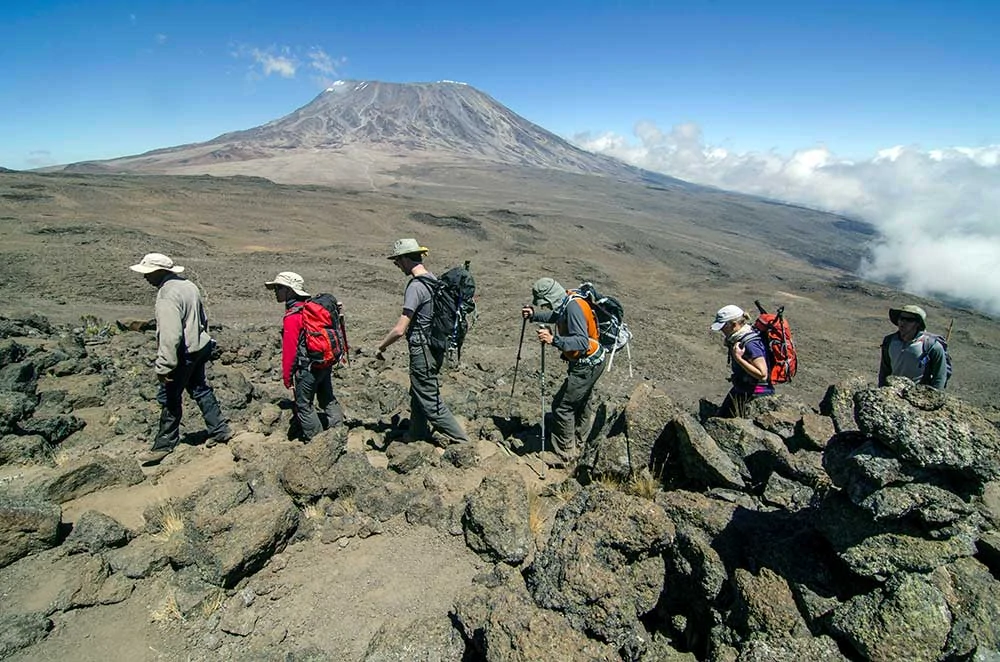Climb Kilimanjaro: Ascending the Peak of Your Dreams

Are you spellbound by the thought of standing atop the highest peak in Africa? Do you dream of conquering the challenge of a lifetime? If so, you must be considering climbing Kilimanjaro, Africa’s crowning jewel. As you embark on this remarkable expedition, it’s crucial to be well-prepared and well-informed. We’ll explore what makes this mountain unique and how to tackle the various challenges that await you.
Climb Kilimanjaro: A Journey Through Nature’s Wonderland
When you climb Kilimanjaro, you’re signing up for more than just a hike. This awe-inspiring volcanic mountain towers at an astounding 19,341 feet above sea level and offers one of the most diverse and breathtaking landscapes found anywhere on Earth.
Imagine setting out to climb Kilimanjaro through lush rainforests brimming with wildlife, passing through moorlands with their distinct flora and fauna, and traversing the otherworldly alpine desert before finally reaching the icy summit. It’s like walking through five different worlds during your ascent!
But wait, before you think that Kilimanjaro is only meant for professional mountaineers, think again! Surprisingly, you don’t need to be a seasoned climber to experience the wonders of Kilimanjaro. That’s because it’s classified as a non-technical “walk-up” mountain, which means amateurs with a decent level of fitness and determination can take on the challenge as well.
Mapping Your Route to the Top: Which Path Will You Choose to Climb Kilimanjaro?
Once you’ve made up your mind to climb Kilimanjaro, you’ll face another significant decision: which route to take. With seven established routes to choose from, each offering its own unique set of challenges, landscapes, and success rates, you’ll need to determine the best match for your personal preferences and abilities. Here’s a quick rundown of some popular paths to the summit:
- Marangu Route: Affectionately known as the “Coca-Cola Route,” Marangu is often considered the most relaxed and affordable option. While it boasts a lower success rate due to a shorter trip duration (5-6 days), it’s still an attractive choice for those on a tight schedule or budget.
- Machame Route: Nicknamed the “Whiskey Route,” Machame offers a moderately challenging climb with remarkable scenery and a more circular path, providing a “climb high, sleep low” approach that greatly aids acclimatization.
- Lemosho Route: If you prefer more solitude and a remote, pristine environment, the Lemosho Route is an excellent option. It’s a longer path that offers stunning views and a high success rate, making it a fantastic choice if you’re looking to savor the climb Kilimanjaro experience.
- Rongai Route: The only route to approach the mountain from the north, Rongai is perfect for those seeking a quieter and more gradual ascent. It boasts a comparatively high success rate and allows climbers to marvel at the less-visited northern slopes.
Preparing for Your Kilimanjaro Climb: Three Essential Steps to Success
The challenge to climb Kilimanjaro is no small feat, but with proper preparation, you’ll vastly increase your chances of reaching the summit. To get started, focus on the three key aspects of preparation: physical fitness, mental readiness, and logistics.
- Physical fitness: To climb Kilimanjaro successfully, it’s crucial to be in good shape. Aim to train consistently for at least three months before the climb, incorporating cardio exercises, strength training, and endurance hikes. If possible, add some high-altitude or hill training to your regime to acclimate your lungs to the thinner air.
- Mental readiness: Your mindset plays a significant role in the success of your climb Kilimanjaro adventure. Do thorough research, set realistic expectations, and cultivate a positive attitude to overcome the myriad challenges that await you on the mountain.
- Logistics: Preparation extends beyond physical and mental aspects. When you plan to climb Kilimanjaro, you’ll be dealing with various logistical factors including establishing travel arrangements, obtaining permits and visas, choosing a reputable guide service, arranging proper gear, and managing health-related considerations such as vaccinations and altitude sickness prevention.
Above and Beyond: The Art of Choosing Your Perfect Kilimanjaro Climbing Crew
When you embark on your climb Kilimanjaro journey, the company you keep is essential. A solid, like-minded, and adventurous crew will not only make your experience more enjoyable but also more successful. To create a team that can conquer the mountain together, consider the following:
- Shared goals and motivation: Ensure each team member shares a similar level of drive, determination, and motivation for the climb. This will help create a strong support system and promote teamwork throughout the journey.
- Compatible adventure styles: Some climbers have a competitive spirit, while others prioritize savoring the scenery and experience. You’ll want to make sure your fellow climbers share your adventure goals and style.
- Group size: Striking the perfect balance between too many and too few climbers is essential. A larger group may help cut down on costs, but it could be harder to manage the team’s varied needs and interests.
Masterful Packing Tips for Conquering Kilimanjaro
As you gear up to climb Kilimanjaro, your preparation extends beyond training your body and mind. The items you pack for the journey can make or break your trekking experience. Here’s a list of essentials to include in your Kilimanjaro adventure toolkit:
- Clothing: Embrace the power of layering! The fluctuating temperatures on Kilimanjaro will require versatile clothing. Include thermal base layers, insulation layers (such as fleece or down jackets), and waterproof outer layers to regulate your temperature.
- Footwear: A good pair of waterproof, high-cut hiking boots is crucial. Invest in quality boots that provide ample ankle support and have been broken in before embarking on the climb.
- Accessories: Don’t skimp on the essentials – high-quality hiking socks, gloves, sun protection, and headwear will help ensure your comfort and safety throughout the journey.
- Gear: Equip yourself with a durable and versatile backpack, a high-quality sleeping bag, a headlamp, a hydration system, and trekking poles.
- Snacks and hydration: Bring high-energy, high-calorie snacks like trail mix, energy bars, and electrolyte supplements. Proper nutrition and hydration are vital for maintaining energy levels on a challenging climb.
Discover the Cultural Riches Beyond the Climb: Exploring Tanzanian Wonders
The climb itself might be the highlight of your adventure, but immersing yourself in the local Tanzanian culture will take your expedition to new heights. Consider diving into the unique customs and traditions of Tanzania by exploring neighboring attractions before and after your climb. Here are several ideas:
- Additional adventures: Be sure to allocate extra days on your trip to explore the Serengeti National Park, catch a glimpse of wildlife at the Ngorongoro Crater, or unwind on the stunning beaches of Zanzibar.
- Engage with guides and porters: Your Kilimanjaro climbing team is a goldmine of local knowledge and life experiences. Take the time to ask questions, swap life stories, and learn more about their lives and the mountain.
- Support local communities: Seek out locally-made products and dine on traditional Tanzanian fare in nearby towns and villages. Relishing the vibrant local life will not only enhance your experience but also support the communities that make Kilimanjaro so captivating.
A Responsible Climb: Becoming a Steward of Kilimanjaro
Preserving the beauty of Kilimanjaro is the responsibility of each climber. By following eco-conscious practices and supporting ethical tour operators, you contribute to the sustainability of the mountain and its surrounding communities. Here are several ways to promote responsible tourism:
- Minimize plastic waste: Opt for reusable water bottles and bags while avoiding single-use plastics on your climb.
- Stick to designated trails: Respect the fragility of Kilimanjaro’s ecosystems by staying on marked trails and adhering to designated camping areas.
- Choose ethical operators: Partner with tour operators that uphold fair labor practices and ensure the welfare of their guides and porters.
The Tanzanian Triumph: Conquering the Challenge to Climb Kilimanjaro
Reaching the summit of Mount Kilimanjaro is an extraordinary feat, but the journey involves more than just reaching the top. It’s about overcoming personal challenges, marveling at the splendor of nature, and bonding with your fellow adventurers. This comprehensive guide aims to illuminate the many facets of Kilimanjaro, ensuring you embark on a once-in-a-lifetime journey with confidence and enthusiasm.
Embrace the Roar of the Challenge: Your Kilimanjaro Adventure Awaits
With the secrets to a successful Kilimanjaro adventure now at your fingertips, it’s time to seize the day and take those first exhilarating steps toward the summit. Armed with determination, resilience, and a heart full of adventure, you’ll climb Kilimanjaro and conquer the “Roof of Africa.” Here’s to the journey of a lifetime!












